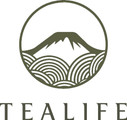The Ultimate Guide to Kawane-cha (2022)
Flat out, one of the best Area Brands of Japanese tea.
This article was last modified October 19th, 2022. by Yuki
Introduction to Kawane-cha
The track record of accolades Kawane-cha had amassed alone is enough to appreciate the significance and quality of the tea produced in this area.
Kawane-cha, one of the premier producers of high-grade Sencha in Japan, is one of the most famous sub-area brands of the Shizuoka-cha, considered one of the 3 Great Teas of Japan alongside Ujicha and Sayamacha.
The Kawane-Area of Shizuoka
The Kawane-cha is a tea grown and produced in the Kawane-area, located right in the middle of the Shizuoka prefecture. The Kawane-area consists of Kawane-Honcho and Kawane, which merged with Shimada City in 2008.
This small area of beautiful mountains and forests, with its population only a hair above 10 thousand, is the proud home to one of the finest teas in Japan. The Kawane-cha is known as one of the Three Great Area Brands of Shizuoka, alongside the Honyama-cha and the Kakegawa-cha.
The "Kawane-cha" is a registered trademark by the Kawane-cha cooperation in 2007. The tea must be purely made from tea leaves from this land to carry the label of Kawane-cha. If the tea contains some leaves outside of this area, it would only be called a "Kawane-cha Blend."
North of this Kawane-Honcho area soars the majestic mountains of the Japanese Southern Alps. These mountains feed the Kawane area with high rainfall, fog, and a chill night wind.
The area is blessed with high levels of precipitation. The rain quickly runs through the mountainous land, providing the tea tree with a continuous flow of fresh water.
These are all ideal factors for making high-quality tea and contributing to the greatness of Kawane-cha.
Unique Agricultural Methods: The Chagusaba-Nouhou
Like Kakegawa-cha, which is relatively close in geographical proximity, Kawane-cha also practices Chagusaba-Nouhou.
The Chagusaba-Nouhou is a unique agricultural method, where the Susuki grass (Japanese pampas grass) and Sasa grass (Bamboo grass) growing around the tea farms are cut to cover the ground around the tea trees.
This allows the bio-organism to develop, becoming organic fertilizers for the tea trees during autumn and winter.
In 2013 this was recognized as a "Globally Important Agricultural Heritage System" by the FAO, or the Food and Agriculture Organization of the United Nations.
By combining the inherent quality of the land and several years of enhancing the soil through this unique natural agricultural method, the Kawane-cha area has developed one of the best soils in Japan to grow Japanese green tea.
Manufacturing Techniques
While Shizuoka is heavily associated with Fukamushi-Sencha, the Kawane area specializes in the lighter steamed Senchas.
They have a unique hand-made manufacturing process called the "Kawane-Momikiriryu," a technique only used in this area.
This technique came about because of the exceptional quality of the tea leaves in this area. The Kawane-cha leaves are much softer with high water content. We would not be able to appreciate the full potential of the leaves if they were made the same way as other tea. This "Kawane-Momikiriryu" reduces the amount of steaming, heating, and rolling done and produces the best results from the unique tea leaves in this area.
Awards
In 1964, Kawane-cha became the first tea to receive the Tennouhai award.
The Tennouhai award is the most prestigious agricultural award in Japan, given to the top agricultural product of the year.
To share a sense of how elusive this award is, "The Minister of Agriculture, Forestry, and Fisheries Award" is the award that crowns the best product of the year for each agricultural product in Japan. There can be only one of these for each product.
The Tennouhai award takes this to the extreme! It takes the 466 "Minister of Agriculture, Forestry, and Fisheries Award" winners across all agricultural products and, from there, selects the best seven products in Japan for the year.
It indicates that it is at the pinnacle of all Japanese produce.
Since then, Kawane-cha has long established its position and brand as one of the top Senchas in Japan.
Kawane-cha has continued to show its dominance over its "normal Sencha" in Japan's Annual National Tea Competition. Its tea has come up on top with the Minister of Agriculture, Forestry and Fisheries award 16 times in this department. It has also won the "area award" for "normal Sencha" 14 times.
The most recent competition in 2022 saw Kawane-cha re-capture the Minister of Agriculture, Forestry, and Fisheries as it rose to the top again.
Cultivars
Some of the cultivars produced in this area include the Yabukita, Yama-no-Ibuki, Koushun, and Okuhikari.
History
The accurate history of Kawane-cha is unknown.
Many believe that the roots of the Kawane-cha stem from Ashikubo-cha or Honyama-cha, which Shouichikokushi, a Japanese Monk, started.
He brought the seed from China in 1241 and planted it in the Ashikubo area. It is said that Shizuoka-cha spread from there, and many believe that these are the roots of Kawane-cha.
However, no evidence proves this.
As early as 1602, the beginning of the Edo period, there were already records of tea used as payment of taxes. This fact indicates that there were already large-scale tea plantations in this area at the time.
If you're looking for some top-quality Sencha, Kawane-cha is an excellent choice if you can get your hands on it. Adding a Kawane-cha Sencha is also one of the goals for this shop. I hope I can do that soon!
[reference]
Yuki
Yuki is the Editor-in-Chief AND Community Manager at Tealife. He bleeds Japanese Tea and loves being a part of the Japanese Tea journey of others. Writes, does events, conducts tasting sessions, drinks, drinks and drinks tea! Easily accessible - hit him up on whatsapp (+65) 85882980.
